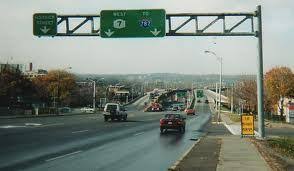The governor of New York, Andrew Cuomo announced recently that the rehabilitation construction of the Collar City Bridge and a stretch of State Route 7 from the City of Troy to the Town of Colonie has been completed. The project was aimed at enhancing safety and easing travel along a vital corridor for the flow of commuters, visitors, and commerce in the Capital Region. The Collar City Bridge carries more than 56,000 vehicles daily between multiple counties in New York. State Route 7 or Alternate Route 7, is one of the region’s most heavily traveled east-west arteries and provides access to many stores, businesses, and restaurants, as well as the Adirondack Northway (Interstate 87) and Interstate 787.
Also Read: Douglaston Development closes deal for senior housing, New York
The rehabilitation project was planned to minimize construction impacts to the traveling public, with work taking place at night and on weekends, and with minimal lane closures during peak travel periods. It was also strategically planned to take place during the COVID-19 period when traveling along the roads was expected to be reduced. Minor finishing work will continue underneath the Collar City Bridge, with minimal impacts to traffic. The US$29.2 million, the two-year project replaced the Collar City Bridge’s bearings and joints, resurfaced the concrete decks, and rehabilitated the adjoining ramps. Overhead sign structures on eastbound State Route 7 and the bridge were also replaced.
Additionally, bridges that carry State Route 7 over Route 32 (Cohoes Road), the D&H Railroad line, and Elm Street were rehabilitated and concrete repairs were made to the westbound climbing lane between I-787 and the Northway. Other improvements included drainage enhancements and the repaving of the ramp to Route 9 and the approaches to the Northway in Latham. The governor explained that “the Collar City Bridge and State Route 7 are critical pieces of the Capital Region’s transportation infrastructure, and the completion of this project will not only enhance safety for motorists but will increase access to communities and local businesses and help keep the Capital Region’s economy moving.”

Leave a Reply